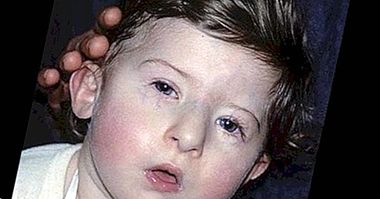Galactorrhea: symptoms, causes, diagnosis and treatment
One of the main characteristics of humans as mammalian animals is the development of the mammary glands, whose only function is to provide food for the young; hence, at least in the human species, babies are also called infants.
However, a series of alterations in the production of the hormones responsible for the segregation of milk can cause a phenomenon known as galactorrhea , which usually occurs in women but can also occur punctually in men.
- Related article: "Types of hormones and their functions in the human body"
Definition of galactorrhea
Galactorrhea refers to the segregation of milk through the mammary gland after the puerperal period has elapsed , that is, passed between six and eight weeks after delivery. In addition, this must remain for at least six months. Although, it is true that in certain women who have gone through several births this phenomenon can occur without these means that there is an underlying disease.
The galactorrhea can not be considered a disease as such, but a sign that the person may be suffering from some other condition, usually producing secretion through both breasts.
This phenomenon occurs particularly in women between 20 and 35 years of age with previous pregnancies . However, there are cases of galactorrhea present in other ages, in children and even in men.
As a general rule, between 20% and 25% of women with menstrual cycles and normal hormone levels experience a galactorrhea phenomenon at some point throughout their lives.
Symptoms of galactorrhea
Although galactorrhea is considered a sign within a larger disorder, it may be accompanied by other associated symptoms. These symptoms can be very varied in terms of type, frequency of appearance, etc., depending on the causes of the galactorrhea itself.
The most common signs of symptoms are:
- Variations during menstruation : irregular cycles or lack of menstrual cycle
- Sensitivity to temperature changes
- Increased thirst and desire to urinate
- Headaches
- Vision problems such as blurred or blurred vision, double vision or lack of vision
- Erection problems , erectile dysfunction and lack of sexual desire in men
- Acne and appearance of body hair
Causes
Out of pathological circumstances, the manufacture of milk in the breast is caused by several hormones and from them prolactin is the one that has a more relevant role . This hormone is formed in a gland called the pituitary gland, which is located at the base of the skull. In addition, the intervention of another hormone called placental lactogen also intervenes.
The cause of the appearance of galactorrhea is due to an imbalance in the production of these two hormones. This alteration can have numerous causes, although the truth is that in half of the cases the cause remains undetermined. The most common reasons why this phenomenon appears are:
- Appearance of tumors in the pituitary gland .
- Side effect of the consumption of some drugs. These drugs usually belong to the groups of antipsychotics, antidepressants, antihypertensives, opioid, antivomitive and anovulatory drugs.
- Endocrine affections that alter the production of hormones, such as primary hypothyroidism.
- Excessive nipple stimulation.
- Physical and psychological stress .
- Chronic kidney disease.
- Hepatic cirrhosis.
- Local infections in the breast .
- Hypothalamic alterations that alter the correct regulation of the release of hormones.
- Thoracic injuries or surgeries .
- Other conditions such as polycystic ovaries, hyperthyroidism, spinal cord injuries, etc.
Diagnosis
The first step in the diagnosis of galactorrhea is to rule out that this secretion is not other than milk . The reason is that any other type of discharge, with traces of blood, purulent or greenish tone are a sign of other important diseases such as breast cancer, so it is vital to go to a health center as soon as it is detected. secretion.
The correct diagnosis of galactorrhea must include the elaboration of a clinical history as detailed as possible, which includes the menstrual history of the patient, in the case that she is female, to rule out the possibility that it is due to a pregnancy. In addition, to investigate on sterility, impotence or variations in sexual appetite.
Also, it must be done a physical examination for signs that reveal any other disease as hypothyroidism and request a history of drugs to rule out this possible cause.
Next, it is necessary to perform a blood test to check the levels of thyroid hormones and prolactin in the blood. According to the specialist clinician, it is necessary to carry out other tests such as urinalysis or chest and abdomen plates.
If all the above causes are excluded, it is very likely that it is a prolactinoma. Prolactinoma is a benign tumor that lodges in the pituitary gland , and although it is much more likely to occur in women, when it occurs in men it is more pernicious.
If the galactorrhea manifests itself together with very high concentrations of prolactin in the blood, some type of sexual dysfunction, infertility or hypogonadism, it is logical to assume that it is a prolactinoma; so the specialist must perform a brain MRI to confirm the existence of a tumor.
Treatment
The intervention to follow in the cases of patients who present galactorrhea will depend on the causes of it. In the event that it occurs in isolation and without high levels of prolactin in the blood, the most common is that it disappears naturally , no type of treatment is necessary.
The exception would be cases in which the secretion supposes a great annoyance, in which case the protocol mandates to administer dopaminergic agonists, which increase the level of dopamine in blood, a hormone that inhibits the formation of prolactin.
Also, when this phenomenon is associated with any other disease, the symptoms will remit when treating the main condition. In the event that the galactorrhea is produced by the effects of a drug, the suppression of this or a reduction in the dose should be sufficient for the symptoms to subside.
In people in whom the magnetic resonance does not detect the presence of a prolactinoma, it is necessary that they undergo periodic reviews to rule out the appearance and growth of a pituitary tumor.
Finally, in cases of prolactinoma surgery is performed to remove the tumor,together with the administration of specific drugs and radiotherapy.



















